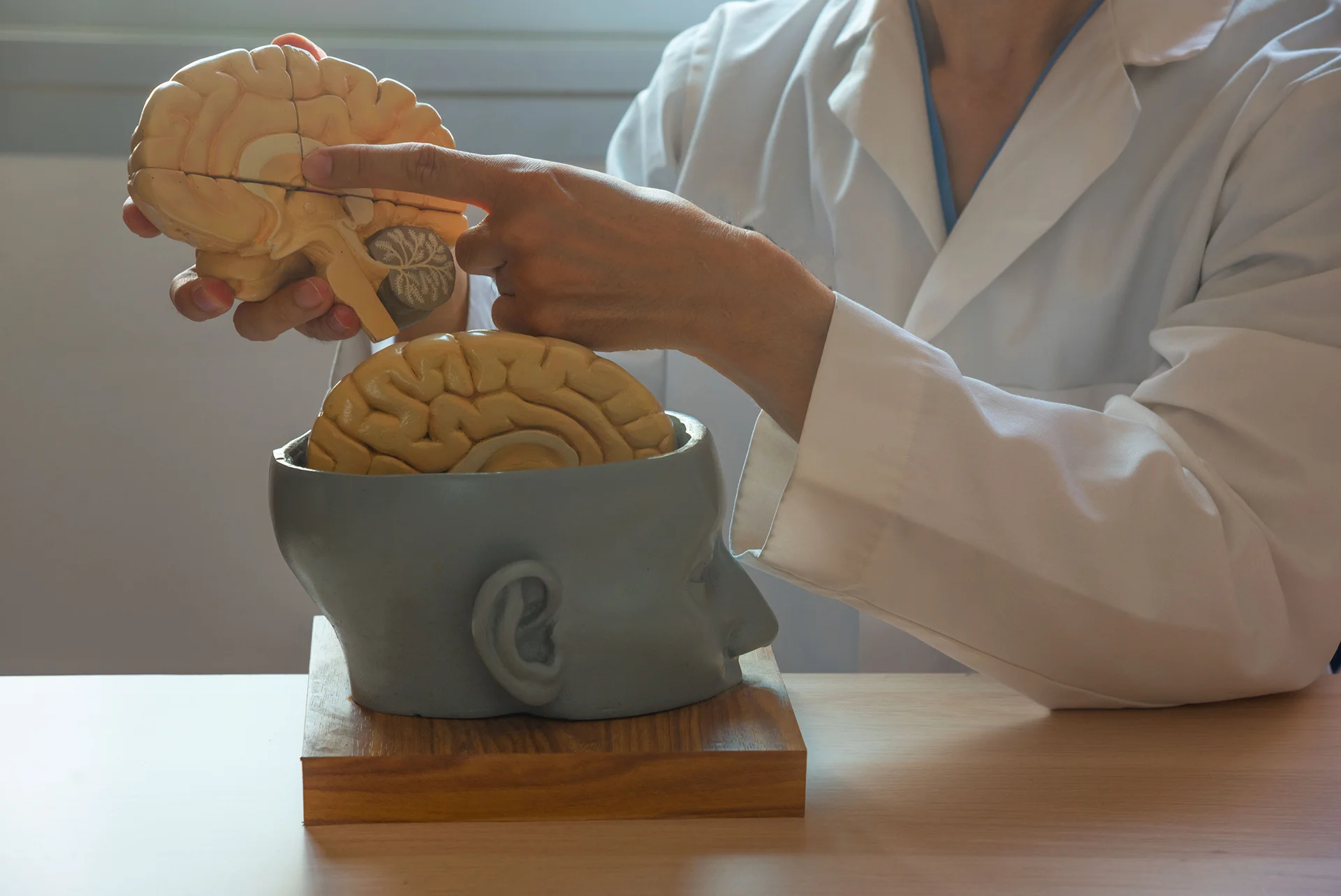NMDA Receptors and D-Serine: How DAO Enzyme Connects the Dots
D-serine, an amino acid, is not just an essential building block but has a pivotal role in the brain’s communication system. D-serine works closely with the NMDA receptor, a gatekeeper in our brain responsible for various neural functions such as memory and learning.
We also have histamine, which might be more familiar to most as a molecule associated with allergic reactions. However, within the brain, it has distinct functions, playing its role as a neurotransmitter.
Managing histamine levels outside our cells is Diamine Oxidase (DAO), ensuring a fine balance is maintained. These entities might seem diverse in function, but they are intricately interconnected.
Teamwork in the Brain: D-serine and the NMDA Receptor
You know, our brain is all about partnerships. And in one of these key collaborations, D-serine steps up to the plate. It pairs up with the NMDA receptor, making sure the receptor performs at its peak. Just like a co-pilot, D-serine doesn’t take the lead but ensures everything runs smoothly.
Finding the Right Spot: D-serine’s Binding Site
Now, D-serine isn’t randomly sticking to the NMDA receptor. It’s got a designated parking spot called the ‘strychnine insensitive glycine modulatory site‘. This particular spot, especially active in our forebrain, is where D-serine ensures the NMDA receptor is doing its job right.
The Basics: What are NMDA Receptors?
NMDA receptors in the brain act as bridges, connecting one nerve cell to another. Think of them as little gates that open and close, allowing messages to flow between cells.
D-serine’s Role in Boosting NMDA Receptor Activity
Remember our friend D-serine from earlier? It has a crucial job here. Alongside other substances, D-serine acts as a co-agonist. This means it works with the NMDA receptor, helping it function more effectively. When D-serine is around, the NMDA receptor can communicate its messages more clearly.
Why This Matters: The Bigger Picture of NMDA Receptor Activity
The way these NMDA receptors work can directly affect our health. When their activity changes – either too much or too little – it can lead to problems. Altered functions of NMDA receptors, leading to several brain-associated anomalies, have been highlighted in previous studies.
Histamine and NMDA: A Neurological Partnership

How Histamine Impacts NMDA Receptors
Histamine, commonly associated with allergic reactions, wears a different hat in the brain. Playing the role of a neurotransmitter, it acts as a key messenger and modifies the actions of NMDA receptors.
Some research points out that when there’s more histamine around, NMDA receptors become even more responsive. It’s like turning up the volume on a speaker, making everything louder and more noticeable.
The Clinical Connection: What This Means for Health
This increased “volume” or receptor activity isn’t always a good thing. Imagine a speaker blaring so loud that it starts to distort the sound. Similarly, when there’s too much histamine, NMDA receptors might get overstimulated.
This overactivity can lead to situations like excitotoxicity, where nerve cells get damaged due to excessive communication. Understanding this balance between histamine and NMDA receptor function can open doors to better manage or even prevent certain neurological conditions.
Diamine Oxidase (DAO) and D-amino Acid Oxidase (DAAO): Understanding Their Distinct Roles
DAO: The Histamine Regulator
Diamine Oxidase, commonly known as DAO, is primarily responsible for breaking down histamine found outside of our cells. Acting as a vigilant monitor, it ensures that histamine levels in our body remain in check, thereby influencing allergic responses and other histamine-mediated reactions.
DAAO: The Guardian of D-serine Levels
While DAO manages histamine, the regulation of D-serine is under the jurisdiction of a different enzyme: D-amino Acid Oxidase (DAAO). This enzyme is crucial in the brain and various tissues, where it oversees the breakdown of D-serine. As D-serine shapes the behavior of NMDA receptors in the brain, the importance of DAAO in preserving effective neural transmission becomes evident.
Consequences of Imbalances
Any imbalance in the activities of DAO or DAAO can lead to distinct sets of problems. Excessive or reduced activity of DAAO can affect the stimulation of NMDA receptors due to altered D-serine levels. On the other hand, DAO imbalances can primarily influence histamine-related responses in the body.
Unlocking New Therapeutic Paths
Recognizing and understanding their connection holds tangible clinical significance. By understanding how D-serine, DAO, histamine, and NMDA receptors interact, we can explore targeted therapeutic strategies.
Conditions influenced by either altered NMDA receptor activity or imbalances in histamine might be more effectively managed or even prevented. This insight might be the key to unlocking better treatments for numerous disorders.
FAQs
What exactly does Diamine Oxidase (DAO) do?
DAO, associated with the DAO gene, has a pretty straightforward job: it takes care of histamine regulation in the body. It’s different from the action of D-Amino Acid Oxidase, which engages with D-Amino Acids such as D-serine.
How does D-serine tie into the body’s complex systems?
Here’s the interesting part: D-serine has a role in how NMDA receptors function. Its levels, which can be both intracellular D-ser and exogenous D-ser, influence this.
Also, its metabolism and D-ser regulation, which involves processes like D-ser degradation, dictate how much D-serine is present and ready for action. And by the way, areas such as the prefrontal cortex and cerebral cortex really highlight this interaction.
With so much buzz about protein synthesis and mRNA expression, where does D-serine fit in?
Good observation. The journey of D-serine doesn’t stop at just interactions. It plays a role in protein synthesis and has a say in the overall protein levels and protein concentration in various cells. The story gets richer with mRNA expression playing its part. So, you see, it’s woven intricately into the body’s biochemistry fabric.
Now, about histamine. Does DAO’s action on histamine impact other processes?
In essence, DAO keeps a check on histamine, ensuring it doesn’t go overboard. But remember, while DAO is hard at work on histamine, D-serine is busy with NMDA receptors. Their paths might cross, especially when factors like oxidative stress come into play, but they largely stick to their primary functions.
We’ve heard terms like ‘enzymatic activity’ and ‘expression levels’ linked to these. Care to explain?
Certainly. Enzymatic activity is just a fancy term to describe how active these enzymes are in doing their job. DAO has its own rhythm of activity, as does D-Amino-Acid Oxidase for D-serine. Expression levels, meanwhile, touch on how much of these proteins are being made in the body. Both play roles in the intricate dance of our body’s biochemical processes.
Unlock Better Health with SeeBeyond: Your Path to Wellness Starts Here!

Understanding the intricate relationships within our body is the first step. Taking action to maintain our health is the next. If you’re looking to address histamine intolerance symptoms, gut issues, or other health conditions, SeeBeyond Shop offers the best DAO supplements, specifically DAO-Hist.
Not sure where to start?
Schedule a thorough consultation with us, and we’ll guide you to the treatment plans that best fit your needs. Visit SeeBeyond Shop now and take a step towards better health!
